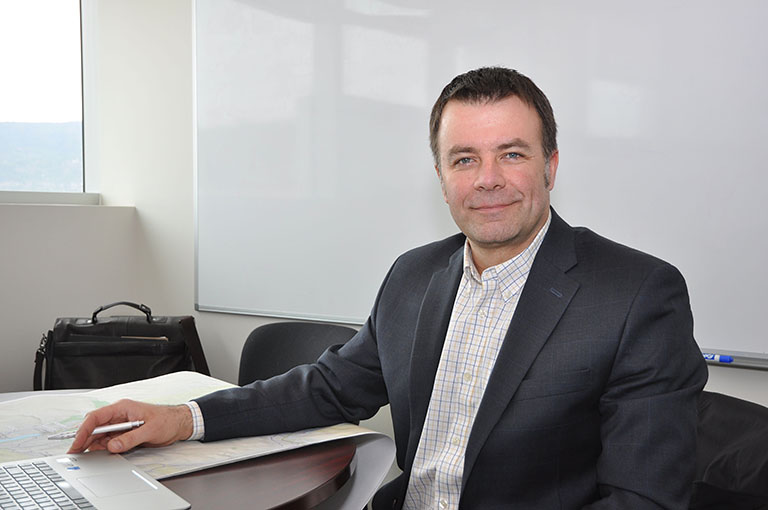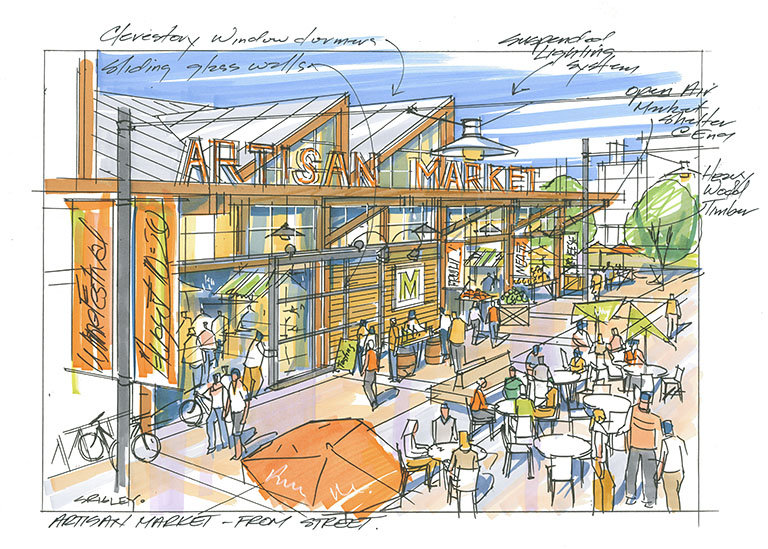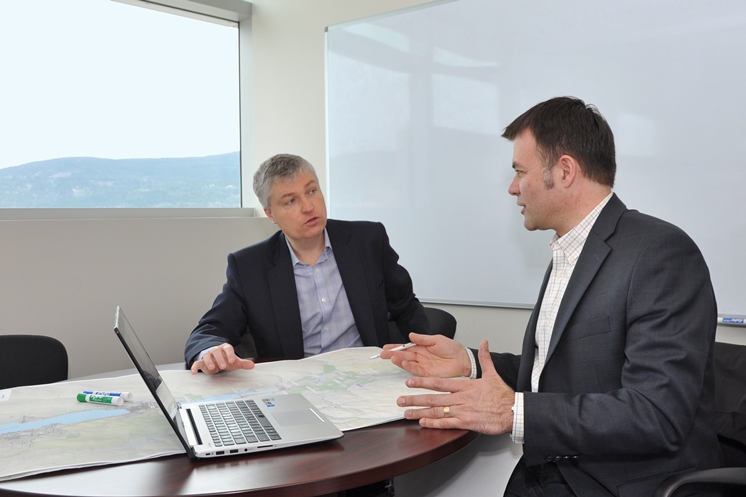New Town Rising: New Monaco
“When you’re working on a small project, there’s very little room for innovation except in the building design,” says Mark Holland, double-degree UBC alumni, LEED accredited planner and one of the driving forces behind the New Monaco project which is anything but small.
New Monaco is shaping up to be a deeply and deliberately innovative $1-billion ‘living lab’ for a wide array of projects drawing on the significant expertise of UBC Okanagan (UBCO) undergraduates, grad students and professors.
Neophyte civil engineers, fresh faced planners, Fine Arts professors, scientific post-docs from any and all disciplines are now involved in the creation of this ‘master plan’ community, one that isn’t focused on the usual sleepy retiree demographic commonly found in the high-vista, hot and sunny Okanagan. Instead, the focus is on what Holland says is “the next chapter of the Okanagan” and what it needs to become to be successful in this century.
Set on the northern edge of Peachland (pop. 5,000) and thanks to the synchronicity of the 125-acre chunk of available land, in early 2012 UBCO signed a comprehensive memorandum of understanding (MOU) with New Monaco Enterprise Corporation.
However, the land would have been nothing without the synergy of the enthused town and the efforts of Holland and Dr. Alaa Abd-El-Aziz, former UBCO vice chancellor who started the collaboration and Dr. Keith Culver, director of the Okanagan Institute of Sustainability (OSI) who’s carrying it along. The project also has the backing of faculty and like-minded investors – many of whom are UBC alumni.
Holland calls the crafting of New Monaco a “multi-prong process” that identifies areas with innovative potential and then seeks out academic partners within UBCO “who might be interested in participating in this, in some way.”
While it often seems there are many opportunities for collaboration, Holland emphasizes it’s extremely difficult to turn opportunity into reality “without the internal leadership of people such as Dr. Culver whose OSI is leading in building partnerships between UBC and the community.”
Holland smiles: “Without the OSI, we would have been walking the hallways [of the university] looking for partners but now we have strong ongoing relationships, driving innovation and research.”
Unlike the usual golf course-centric ‘splodge’, New Monaco is based on the concepts of sustainability, minimal negative environmental effects and workability. Designed as a massive seed pearl for “21st century Okanagan”, the multi-stage, multi-year plan is first to build suitable offices and buildings to attract technology companies and other high-value tenants, to create white-collar and ancillary jobs. This will bring in the workers and their families to occupy and use the commercial, mixed-use and residential components and effectively double the population of Peachland, increase its diversity and power up its tax base.
Small projects usually must conform, while slipping into existing infrastructure and the existing ethos of the town or city. Even larger projects have their less tangible constraints, explains Holland: “When pursuing innovation, you’re continually dealing with existing context, the zoning, community politics. However the partnership between the university, ourselves and Peachland has created the perfect stage for applied innovation.”
When the canvas is broad, open and receptive, so are the opportunities. For examples, the UBCO New Monaco relationship has so far created three scholarships for student leadership in engineering, health and sustainable development. Recently, Holland and his team also worked with a group of undergrad engineering students who created a “whole new plan for low-impact road” construction for steep Okanagan hillsides.
In the Okanagan, Holland says conventional road construction “usually just strip mines the land and puts a giant landing strip across it.” Whereas the UBCO students took the innovative path and “figured out how to put a road system into a hill with almost no visual impact at all. It’s phenomenal what they’ve come up with.”
This new method has now been presented to the key leading engineers in the region. It might soon become standard practice. As the partnership matures, Holland expects even more collaborative innovation:
“The land always incredibly shapes whatever you’re doing. So this land and the community, as well as our own values and aspirations, along with all the things we’ve learned from our partnership with UBC, together they continue to evolve and shape this concept.”
Read more about
Alumni EngagementRead more Alumni Engagement stories:
This story also illustrates our commitment to:
SustainabilityRelated Content


Campus
Okanagan
"It’s phenomenal what they’ve come up with.”